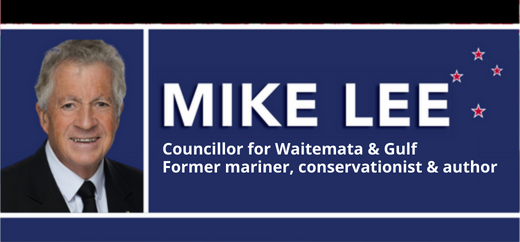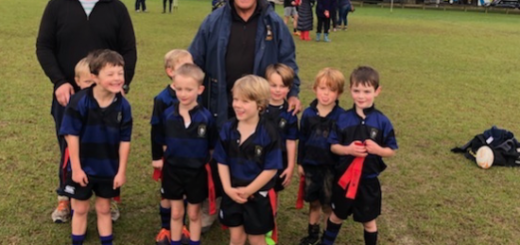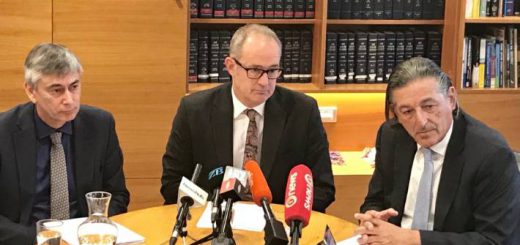Unveiling of Bruce Jesson’s portrait, Regional House 1 May 2009
Speech Notes
Unveiling of Bruce Jesson picture at Regional House 1 May 2009On 10th anniversary of Bruce’s death.
On behalf of my colleagues the members and staff of the Auckland Regional Council Councillors Judith Bassett, Brent Morrissey – CEO Peter Winder and General Manager Christine Perrins I would like to extend a very warm welcome here this evening. Thanks for coming along. There are numerous apologies from people who wanted to be here but couldn’t and I will read the out as they did ask.
After I conclude my remarks – I’m going to open the floor to anyone who wants to say a few words about Bruce & then Joce Jesson will speak and then unveil the picture of Bruce. Then we will hear from Chris Trotter who will sing a song in honour of Bruce.
We gather here this evening to commemorate the 10th anniversary of the death of Bruce Jesson. It is fitting that this is May Day as Bruce was a socialist who dedicated a good part of his adult life fighting for a more equal New Zealand, an independent New Zealand and indeed the New Zealand Republic. As well his other great talent as a writer, political economist and political historian Bruce was for a relatively short time an elected member of the Auckland Regional Council. He was also rather the first elected chair of the Auckland Regional Services Trust.
Bruce’s career as an active politician was all too brief but he achieved more in his short career than most do in a lifetime.
As a member of the Auckland Regional Council he famously led the fight to defy the government of the day to stop the sale of Auckland’s public assets, notably the Ports of Auckland.
Then he and his Alliance team in region wide (‘at large’) elections then went on to capture the ARST.
The ARST inherited a large debt from the ARC – the conventional, official wisdom was that the ARST would be forced to sell assets to pay off that – debt . The government and the officials in Wellington were at first shocked at the unexpected result but consoled themselves at the humiliating prospect of the ‘Alliance dominated ARST’ as it came to be known, being forced to break its promises. But it was the government and its officials who were shown up as fools as the ARST broke with the official wisdom and used the assets to trade their way out of debt. The regional debt was virtually retired in three years.
The life of practical politics was not easy for Bruce – he became something of a lightning rod for all sorts of opposition. It was very tough going.
Though they kept their promises or actually because their kept their promises what came to known in the media as ‘the Alliance dominated ARST’ did not get an easy ride. As Bruce explained in his Metro article ‘An Accidental Politician’ of November 1995.
The Alliance had made a lot of enemies in its brief existence, both nationally and in local government. We must have seemed insufferable with our belligerence and holier-than-thou politics. Now, we were the focus of attack and I was the obvious target.
For those three years Bruce was forced to live his life on a political battlefield. The attacks came in from all sides. Not only from the right-wing media, but also from the Labour Party which at the time which saw the Alliance as a deadly rival – and even occasionally from the Alliance itself.
As Bruce put it so memorably in the same Metro article:
“The situation of the trust was difficult enough as it was. The trust as a totally new body, was moving onto other people’s territory and we found ourselves at the centre of an incessant squabble. We squabbled with the ARC over the divestment of the assets and debt from them to us. We squabbled with the Auckland City Council over our jointly owned downtown properties. We squabbled with nearly all the councils about the control of the water and wastewater system. I had always thought of myself as a meek and mild little man, but I now discovered a cantankerous and stubborn side of my nature. After squabbling all day with other politicians, I would go to an Alliance meeting of an evening and squabble with them as well.”
To keep the ARST afloat in its first few months without selling assets ARST Chief Executive Mark Ford with a small group of financial advisers formulated a subordinate debt arrangement with the ARC – the debt to be repaid over 15 years. When Bruce retired from politics in 1995 the ARST assets were worth $1.8 billion dollars and as he pointed out in 1999 “few private sector companies performed as well during the six years the Trust existed”.
To the consternation of the political establishment a viable alternative to privatisation had been created – holding on to public assets – and managing them to create public wealth in the public interest. “Economic Jessonism” – perhaps we might call it. This completely flew in the face on neo liberal conventional wisdom. I have absolutely no doubt that the remarkable success of the ARST between 1992 and 1995 was to have an important influence on the Labour-led government some ten years later.
Since that time the profits from the Port and other regional assets have been a key funder of Auckland transport and storm water projects – and are now virtually taken for granted in Auckland. It is hard to imagine how we could have embarked on the recent transport and other infrastructure upgrades without it.
Ten years ago the late David Lange wrote an article about Bruce in the Sunday Star-Times of 14 March 1999 – just a few weeks before Bruce’s death and in the last grim months of the Shipley government. David aware of Bruce’s approaching death (and probably his own) praised Bruce for his remarkable achievement in politics.
David finished his article on a melancholy note and spoke for many of us when he said that Bruce Jesson was a genuine left wing politician – a man with understanding and vision. “ He who could build the future is leaving his mates among the ruins.”
For me I well remember the last time I saw Bruce with Joce together – perhaps an hour or so before he died.
For me I confess from the moment of his death can I say the fun and interest that he created, to a large degree went out of politics for me. I realised Bruce Jesson’s influence on my life was irreplaceable and I guess the same would apply to most people here this evening.
Bruce’s picture will hang here in the foyer of the ARC along with the portraits of all the other chairs of the Auckland Regional Authority and the Auckland Regional Council in grateful thanks from we the representatives of the people of the Auckland Region.
I will close with some words from Berthold Brecht.
This is it but it’s not enough, but at least it will tell you we are still here. We are like the man who carried with him a brick to show the world what his house was like.



